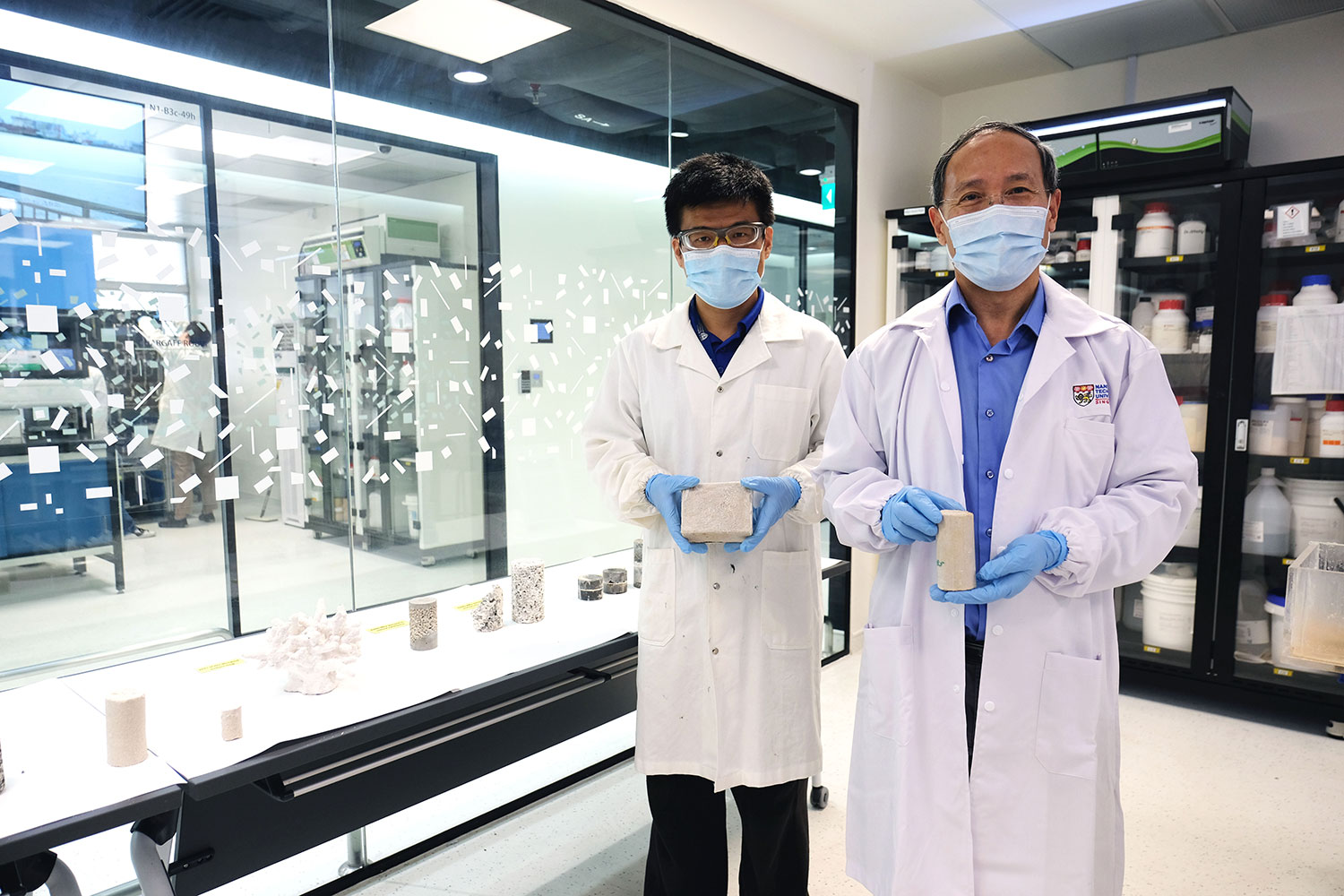
The production of cement is a major source of greenhouse gasoline emissions , as the nutrients have to be heated to really large temperatures. Now, researchers caused by Nanyang Technological University, Singapore (NTU Singapore) have created a newer biocement made entirely through waste materials – a healthier and more sustainable alternative to frequent cement.
And the biocement is made of two wide-spread waste materials – industrial carbide sludge – usually the waste material from the production of most acetylene gas sourced within Singapore factories – and as well as urea, which is derived from and the urine of mammals. The process starts with treating carbide sludge with an acid to bring about soluble calcium. Urea is then added to the soluble calcium that they eat to form a cementation solution. The team then adds a bacterial culture to this cementation top secret, where they break down generally the urea to form carbonate ions.
Next, in a very process called microbially brought about calcite precipitation (MICP), associated with carbonate ions react by soluble calcium ions in order to create calcium carbonate – a hard, solid material that is undoubtedly found in chalk, limestone, and marble. When this response occurs in soil or orange sand, the resulting calcium carbonate built bonds soil or rub particles together to increase their strength and fills the pores between them to reduce water seepage through the material.
The soil reinforced because of biocement has an unconfined data compresion strength of up to 1 . a few megapascals (MPa), which is compared to that of the same soil prepared using an equivalent amount of real. This makes the team’s biocement suitable for soil improvement jobs, such as strengthening the ground use with setting up or excavation, controlling beach erosion, trimming back dust or wind fretting in the desert, or generating fresh water reservoirs via beaches or in the desert. The biocement could also be often seal cracks in top soil or rock to reduce water in the house seepage.
Apparently, the NTU team’s option in formulating biocement could possibly be solution is colorless. When rubbed into soil, sand, or ordinary, their original color will be preserved. According to the researchers , their biocement-making process normally requires less energy and unlikely fewer carbon emissions in contrast traditional cement production treatments. It is produced at space or room temperature without burning a thing and is thus a even more so, less energy-demanding, and carbon-neutral process.
The NTU Singapore team says any time biocement production could be scaled to the levels of traditional cement-making, the overall cost of its output compared to that of conventional cement would be lower, which would allow biocement both a more sustainably and cheaper alternative to cement.
Scientists turn urine and private sludge into eco-friendly biocement
Source: Tambay News

0 Comments